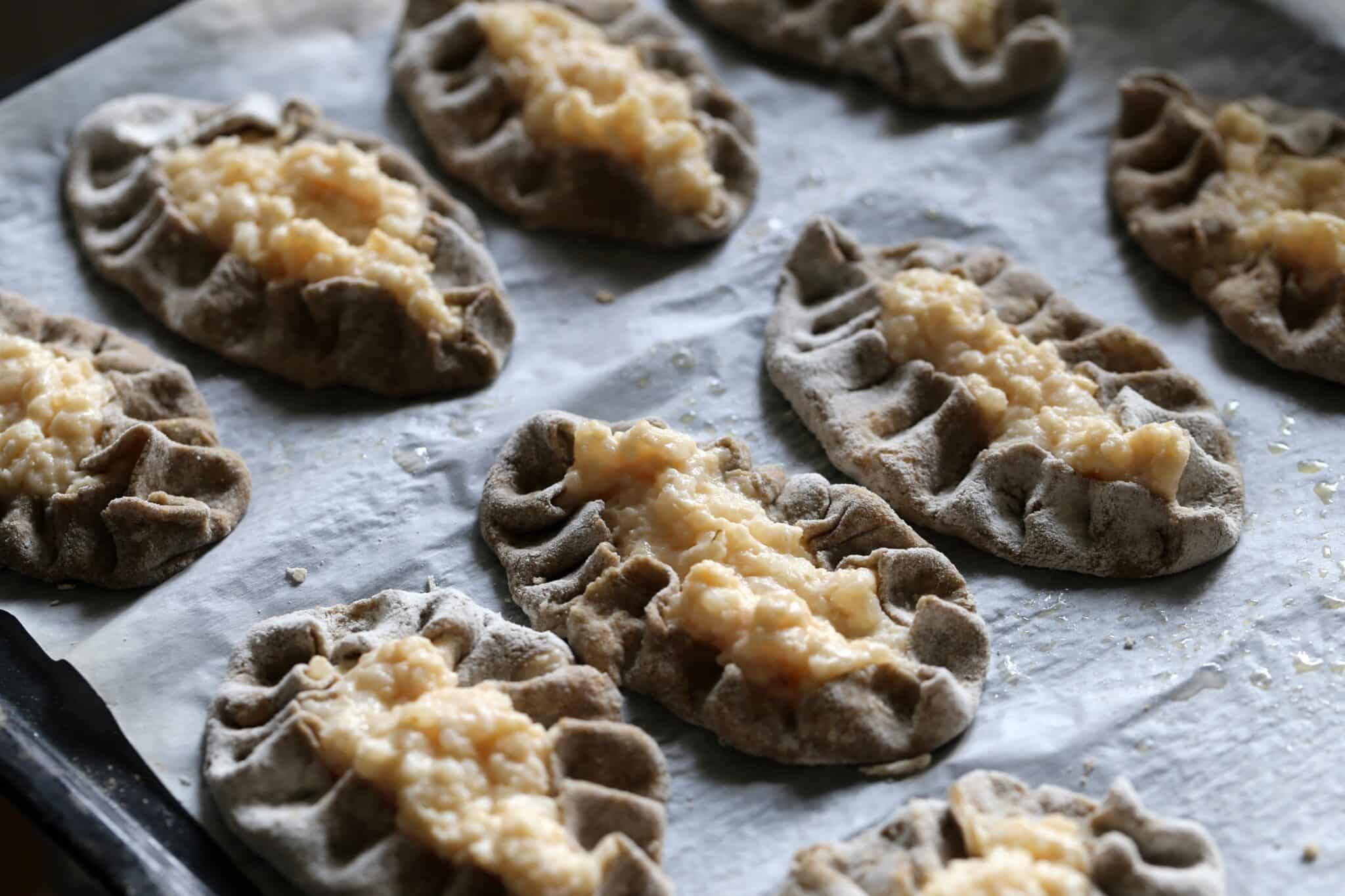Last updated on October 6th, 2023 at 02:34 pm

This guide created by our Remitly team is part of our series dedicated to the cuisine of our global customers
Origins of Karjalanpiirakka
We can trace the origins of karjalanpiirakka back to the 17th century and the region of Karelia, which was once a part of eastern Finland but now resides largely in Russia. People believe that they initially baked these pastries over hot stones in open fires. The filling often contained barley, as rice wasn’t introduced until a later period.
Over the centuries, this modest pastry evolved into what we now recognize. In 2017, the Finns officially designated it as the national dish of the country.
Ingredients
The ingredients used in karjalanpiirakka are simple yet flavorful. The crust primarily consists of rye flour mixed with water and a pinch of salt for taste. Rye gives the pastry its characteristic dark color and robust flavor.
For the filling, people commonly use rice porridge made from short-grain pudding rice. Alternatively, mashed potatoes can provide a different texture and taste.
While the traditional karjalanpiirakka recipe remains popular, regional variations exist across Finland. In some areas, people use barley or buckwheat instead of rye for the crust. Fillings can also vary.
Despite these differences, all versions share common traits: a thin, crispy crust enveloping a soft, savory filling.
Recipe for Karjalanpiirakka
Karjalanpiirakka is a dish that requires patience and precision, but the end result is worth it. Here’s a simple recipe to try at home.
Ingredients
For the dough:
– 2 cups of rye flour
– 1 cup of all-purpose flour
– 1 teaspoon of salt
– About 1 cup of water
The filling:
– 1 cup of short-grain rice
– 4 cups of milk
– A pinch of salt
For the topping (optional):
– 4 hard-boiled eggs
– Half a cup of butter, softened
– Salt to taste
Instructions
- Rinse rice until water’s clear. Boil with 2 cups water.
- Simmer rice until water’s nearly gone.
- Add milk; simmer to porridge consistency.
- Mix rye flour, all-purpose flour, salt. Add water to form non-sticky dough.
- Roll dough into small, thin ovals.
- Add porridge to ovals, fold edges with visible filling.
- Bake at 475 °F (245 °C) for 15 mins.
- (Optional) Mix mashed hard-boiled eggs, butter, and salt.
- Serve warm with egg butter on top.
Serving and Eating
You can enjoy Karjalanpiirakka at any time of day, from breakfast to dinner, and people often serve it as part of a buffet spread during celebrations.
When eating this pastry, it’s customary to hold it in your hand with the crimped edge serving as a ‘handle’.
Some Finns like to top their karjalanpiirakka with egg butter—a mixture of hard-boiled eggs and butter—for added richness.
Finnish Cuisine
Finnish cuisine frequently reflects its simplicity, practicality, and reliance on locally sourced ingredients. It’s a cuisine shaped by the challenges of Finland’s harsh climate and the resourcefulness of its people.
Seasonality is a pivotal factor in Finnish cuisine. In the summer months, when fresh produce is abundant, you’ll often find dishes like new potatoes with dill or berry pies gracing the table.
In contrast, during the winter months when fresh ingredients are scarce, preserved foods like pickles and jams become the focal point. Additionally, root vegetables play a prominent role in winter meals.
Traditional Finnish Dishes
Beyond karjalanpiirakka, Finnish cuisine boasts a plethora of traditional dishes that encapsulate the essence of Finnish cooking. Pulla, a sweet cardamom-spiced bread, is a beloved choice for coffee breaks. Lohikeitto, a creamy salmon soup, offers comforting warmth and is relished throughout the year.
Ruisleipä, or rye bread, is another staple found in Finnish households. It’s commonly served for breakfast or lunch with various toppings such as cheese, cold cuts, or pickled herring.
Additionally, Finnish cuisine has been influenced by its neighboring countries—Sweden, Russia, and Norway—over the centuries. Swedish influence can be seen in dishes like meatballs and pancakes, while Russian influence is evident in dishes like borscht soup or piroshki pastries.
Despite these influences, Finnish cuisine maintains its distinct identity—one that values simplicity, quality ingredients, and hearty flavors.
Visit the homepage, download our app, or check out our Help Center to get started.
